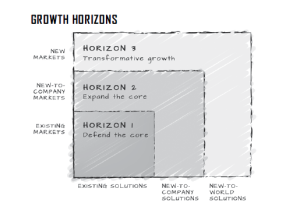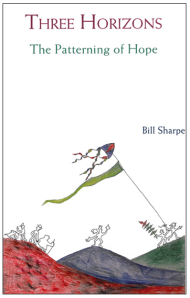Nobody said innovation was easy and I was reminded of that recently. Innovation can certainly be, without doubt, fairly complicated in larger organizations.
What must not be forgotten is that we must manage the innovation activities across all the three horizons of innovation and that adds even more complexity.
What is ensured from this complexity is that you can expect innovation does get very entangled in balancing out the resources that are available and needed, to handle all the conflicting, competing demands placed within the innovation system.
For the innovation teams involved in the multiple tasks, getting this balance right and also trying to justify further support to keep all the activities progressing on time, is tough.
We need to exploit and we need to explore and those often require different mindsets or structures.
Each of the innovation horizons can demand different management’s attention for allocation, response and focus.
Horizon one represents the company’s core businesses today, horizon two includes the rising stars of the company that will, over time, become new core businesses, whereas horizon three consists of nascent business ideas and opportunities that could be future growth engines.
This link takes you to a series of discussions on the three horizons http://tinyurl.com/d97bkhh for a deeper explanation.
Dual needs are often conflicting Continue reading “Striking the balance for exploitation across different innovation horizons”
 We often constrain our innovation because we ‘shoehorn’ any conceptual thinking into a given time, usually the yearly budgetary plan.
We often constrain our innovation because we ‘shoehorn’ any conceptual thinking into a given time, usually the yearly budgetary plan.




